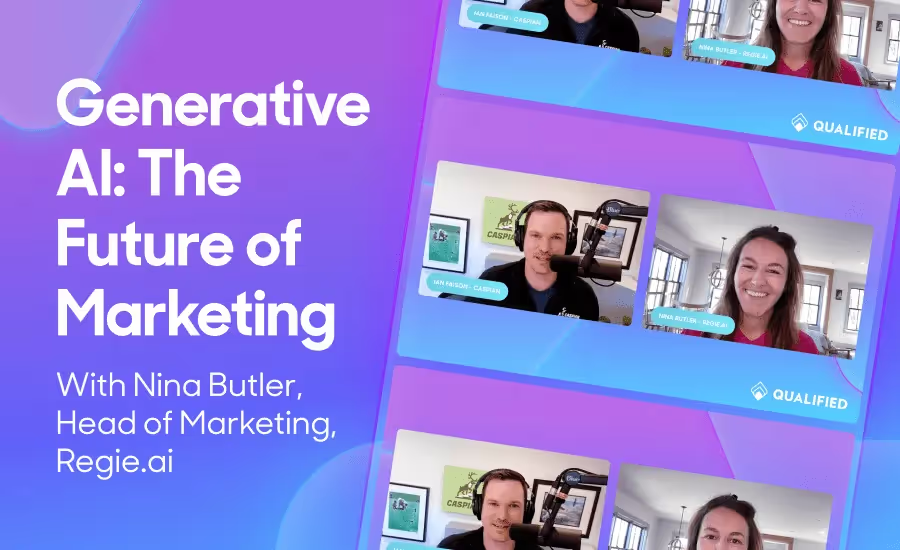What is lead generation?
Lead generation refers to the process of identifying and attracting potential customers (leads) for a business's products or services.
In the context of B2B sales, lead generation involves capturing the interest of businesses and converting them into qualified leads that have the potential to become paying customers. The goal is to initiate and nurture relationships with prospects, guiding them through the sales funnel and ultimately leading to a successful conversion.
Why is lead generation important?
Lead generation is crucial in B2B sales because it serves as the foundation for acquiring new customers and driving business growth. B2B companies often have longer and more complex sales cycles compared to B2C (business-to-consumer) transactions. Here are several reasons why lead generation is important in B2B sales:
- Increased sales opportunities
Effective lead generation strategies result in a steady influx of qualified leads, which translates into increased opportunities for sales conversions and revenue growth.
By consistently generating new leads and converting them into customers, businesses can expand their customer base, increase market share, and achieve sustainable business growth.
- Targeting and segmentation
Lead generation enables businesses to identify, segment, and pursue leads based on specific criteria and preferences. Account-based marketing (ABM) is a targeted approach in B2B marketing where companies focus their efforts on specific high-value accounts or companies rather than individual leads.
Lead generation plays a critical role in ABM by helping businesses identify and generate leads within the target accounts.
- Improved conversion rates
Lead generation plays a crucial role in increasing conversion rates in B2B sales by providing a steady stream of qualified leads and facilitating effective engagement with potential customers.
ABM enables a more personalized and targeted approach, fostering stronger relationships and higher conversion rates with key accounts.
- Better customer insights
Lead generation in B2B sales can provide customer insights that help businesses understand their target audience, their needs, preferences, and behaviors. One incredibly effective tool for this is the use of chatbots on your website to interact with visitors and gather valuable insight by asking targeted questions.
This information can be used to qualify leads and route them to the appropriate sales representative, ensuring that customers are connected with the right person to address their specific requirements promptly.
- Long-term relationship building
In B2B sales, building relationships with potential customers is essential. Lead generation allows businesses to initiate contact with leads and establish a foundation for building relationships. Through consistent nurturing efforts, such as follow-up emails, personalized content, and targeted communications, companies can stay on the radar of potential customers and build trust over time.
This relationship-building process creates more opportunities for sales conversations and increases the chances of converting leads into customers.
- Cost efficiency and ROI
Not only does lead generation help reduce customer acquisition costs by providing a steady stream of qualified leads, but the leads themselves have a higher conversion potential, requiring less time, effort, and resources to convert into customers.
The ability to identify and prioritize qualified leads reduces the overall cost of acquiring new customers.
What are the different types of leads?
In B2B sales, there are various types of leads that can be categorized based on their level of qualification and readiness to engage with the sales process. The key is to understand the different stages of lead qualification and tailor sales and marketing efforts accordingly to effectively engage and convert leads into customers.
Marketing Qualified Leads (MQLs)
This type of lead is a prospect or potential customer who has been deemed more likely to become a customer based on their engagement with marketing efforts and their fit with the target customer profile. MQLs are typically identified through lead generation activities and marketing campaigns, and evaluated based on specific criteria that indicate a higher likelihood of conversion.
Sales Qualified Leads (SQLs)
These are leads that have been evaluated and deemed ready for direct engagement by the sales team. SQLs have progressed further in the lead qualification process compared to Marketing Qualified Leads (MQLs) and are considered more likely to convert into customers.
Product Qualified Leads (PQLs)
Product Qualified Leads (PQLs) are leads that have experienced the value and benefits of a company's product or service through a self-service trial, freemium model, or other product-centric interactions. PQLs differ from MQLs and SQLs in that their qualification is primarily based on their product usage and engagement, rather than traditional marketing or sales criteria.
10 steps of lead generation
The lead generation process typically involves several steps to effectively attract, engage, and convert leads into customers. While the specific steps may vary depending on the business and industry, here are 10 common steps of lead generation:
- Define your target audience
Identify the specific characteristics, demographics, and needs of your ideal customer or target audience. This helps you tailor your lead generation efforts and focus on reaching the right prospects.
- Set clear goals
Establish measurable goals for your lead generation efforts. This could include the number of leads you want to generate, the conversion rate you aim to achieve, or the revenue you expect from those leads. Clear goals help you stay focused and evaluate the success of your lead generation strategy.
- Develop content to drive leads
Create valuable and compelling content or offers that resonate with your target audience. This could be in the form of ebooks, white papers, webinars, case studies, ROI calculators, or free trials. The goal is to provide something of value in exchange for contact information or engagement from potential leads.
- Optimize landing pages and forms
Create optimized landing pages with clear and compelling calls-to-action (CTAs). Use forms to capture lead information, ensuring they are user-friendly and collect the necessary data for effective follow-up.
- Drive traffic to your content
Utilize various channels and strategies to drive traffic and attract your target audience to your content.
- Capture contact information
Once prospects engage with your content or visit your website, provide a clear and easy way for them to share their contact information. This typically involves using lead capture forms, landing pages, or call-to-action buttons that encourage visitors to provide their details in exchange for the promised value. To ensure data accuracy and reduce bounce rates, use an email verifier before adding contacts to your CRM.
- Qualify and segment Leads
Implement a lead qualification process to assess the quality and readiness of each lead. This could involve evaluating their fit with your target audience, their level of interest or engagement, and their potential as a paying customer. Segment your leads based on criteria such as industry, company size, or specific needs to tailor your follow-up and nurturing efforts.
- Nurture leads
Develop a systematic approach to nurturing leads over time. This involves building relationships, providing relevant and valuable content, and guiding leads through the sales funnel. Use techniques such as personalized email campaigns, targeted content marketing, webinars, and direct outreach to keep leads engaged and interested in your offerings.
- Handover to sales Team
Once a lead is deemed qualified and ready, pass them over to your sales team for further engagement and conversion. Provide the necessary information and context to ensure a smooth transition and effective sales follow-up.
- Measure and analyze results
Continuously monitor and measure the performance of your lead generation efforts. Analyze metrics such as conversion rates, lead quality, cost per lead, and revenue generated. This helps you identify areas for improvement, optimize your strategies, and refine your approach to generate better results.
By following these steps and continually refining your lead generation process, you can attract, engage, and convert leads into customers more effectively. Remember that lead generation is an ongoing effort that requires continuous monitoring, adaptation, and optimization to achieve long-term success.
Conclusion
In today's competitive business landscape, implementing robust lead generation strategies is vital for driving growth and success. By understanding the target audience, utilizing a variety of tactics, leveraging technology, personalizing the customer experience, and optimizing for efficiency, businesses can generate a steady stream of qualified leads and maximize their conversion rates. With the right lead generation strategies in place, businesses can fuel their sales pipeline, expand their customer base, and thrive in the B2B market.
And if all of this feels a little cumbersome, consider implementing marketing strategies that don’t lean on gated content and forms to provide your team insight into who is engaging where on yout website. With the Pipeline Cloud, you have full visibility into your website visitors, signals of buying intent at the account level, and every tool you need to convert visitors in real time.
Learn more here ➡️
-(1).webp)























.svg)


